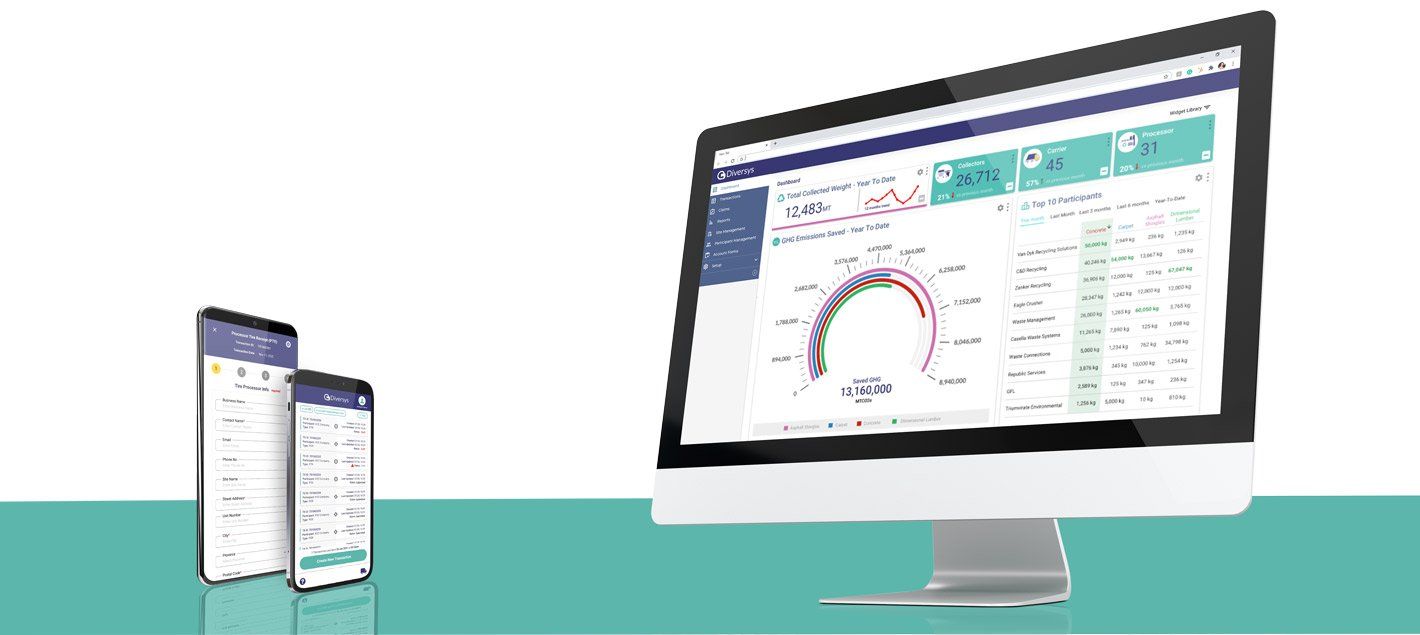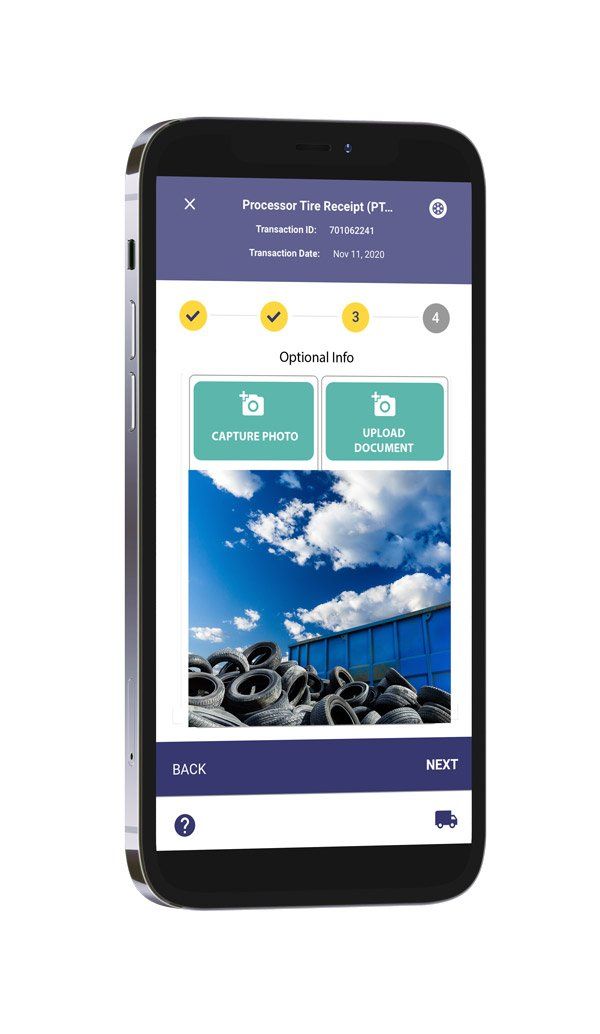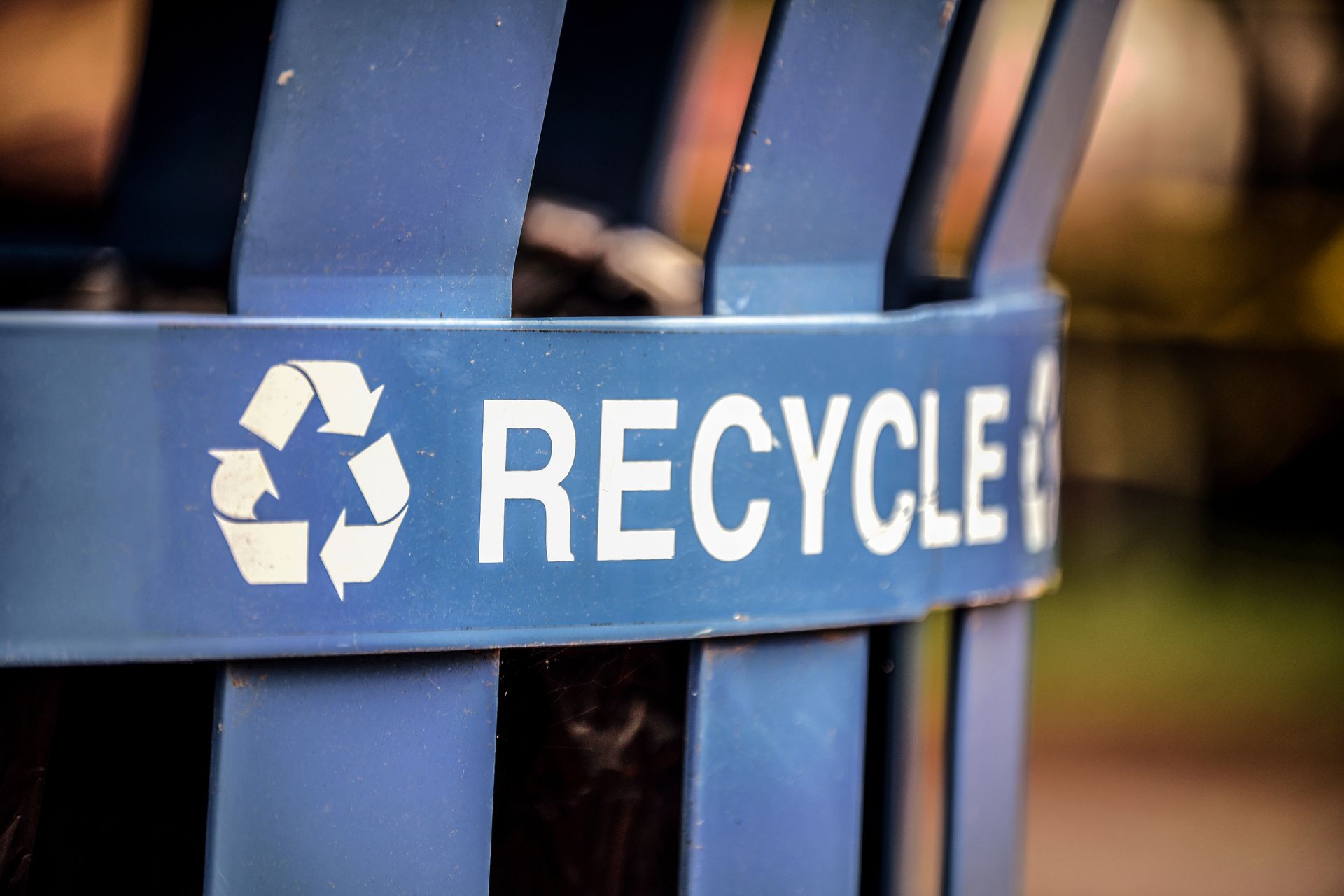MYTH 7: "Poor data doesn’t cost me."
“Sure, poor data sucks, but it doesn’t really cost me anything.”
This is the seventh installment of our eight-part myth-busting series. In this series, we explore some common myths in the recycling and waste management industry, explain how these myths came about and why they persist, and share some revolutionary insights that help program managers see things in a better way.
What do organizations like Starbucks, Burberry, McDonald’s, and Spotify have in common?
We don’t blame you if you’re stumped. After all, they seem disparate: one’s the world’s largest coffeehouse chain, another is a luxury fashion house; one is a multinational fast-food corporation, and another is an audio streaming service.
Yet, all four companies share this:
They’re using data in innovative, creative ways to improve performance and boost sales.
And their success is not incidental. These organizations are leveraging the intel they gain through advanced metrics to build better campaigns, make more informed decisions, and even predict customer behavior.
They also can deliver better experiences to consumers, get more targeted and personalized, and become more efficient overall.
Poor Data Doesn’t Cost? The Stark Numbers

Big corporations like these are the obvious examples of the importance of leveraging high-quality data, but they are hardly unique in this regard.
In fact, given the abundance of examples of organizations making the most of their data to drive success – not to mention the examples of organizations running bad operations based on faulty data - it’s hard to imagine that this myth persists.
But sometimes, identifying how much poor data is costing your organization specifically is a little more challenging.
So let’s look at the stark numbers.
It's estimated that the cost of bad data is an astonishing 15% to 25% of revenue for most companies.
What does this translate to in terms of dollars?
A study by Gartner has found that most organizations surveyed estimate they lose $14.2 million annually – just because of poor data.
While the size of your organization or budget may be larger or smaller than the average, these numbers aren't easy to ignore. They do and should give us pause.
As well, there are unique challenges and considerations for the waste and recycling industry that make good quality data especially crucial.
So, let’s dive into the role data plays in this industry in three steps:
- Defining what data quality is. Having this definition will be helpful if you’re wondering whether your organization specifically is utilizing—meaning collecting, storing and easily accessing—high-quality data or not
- Discussing where we typically see organizations in the industry lose data integrity, and what the cost of that loss is
- Identifying what can be done about all of this
1. What is Data Quality?

Data quality can be assessed on the basis of three key factors: relevance, accuracy, and consistency.
Relevance is the extent to which data is useful for a given task or purpose. For instance, most waste or recycling organizations need to report on specific information to legislators, stakeholders, or the public – such as tonnage diverted from landfills, GHG emission reduction, or volume of derived products after processing.
Questions to ask:
- Are the measurements used by these organizations to track this information truly relevant?
- Ask you tracking the right metrics to be able to report on your crucial information correctly?
Accuracy is the degree to which information contained within data matches what was originally intended. This is one standard many in the industry struggle to meet, and the cause is very simple: most recycling or waste management departments, divisions, or organizations rely on paper forms to capture information about what’s happening “in the field” (meaning when materials are picked up, dropped off, or processed).
Questions to ask:
- Is your organization relying on paper forms?
- Since paper forms provides zero safeguards to protect against errors and fraud, can you be sure about the accuracy of the data that is being collected, written and transcribed?
- Do you know how often inaccuracies seep through your program?
Consistency is the extent to which data from different sources agrees with one another. Another aspect of consistency is timing which is all about understanding whether you are accessing, reviewing and using the latest available data or perhaps data that is stale and even outdated.
Questions to ask:
- How do you know if the numbers you’re looking at in the office are the same ones coming in from the field? (Hint: if you use paper forms and an individual manually enters information from these forms into a software tool like MS-Excel, your data consistency is already at risk.)
- Is the information or data you’re looking at provided to you in real time? Or are you getting paper forms in the mail weeks after drop-offs and pick-ups have taken place?
- Are there even more delays as you reconcile the numbers and all those reams of paper?
Taking an honest look at these key data factors—are you able to track the right metrics that are critical to your organization, is the data behind the metrics correct and accurate, and is the data the most accurate and timely that it could be—is the first step in understanding whether your organization has a data quality issue. Then next step is to then understand the ramifications or impact of low-quality data.
2. Losing Data Integrity and the Cost of Low-Quality Data

Now that we have a basic definition of what it means to have good-quality data, it’s likely pretty clear why having it is so important. But let’s look at a basic example of what low-quality data—data that lacks relevance, accuracy, and consistency—results in:
If you are trying to study your program’s performance over time, for example, and your data has errors that lead to exaggerated recovery numbers in one month and understated figures in another, then you cannot use this information reliably in an analysis of performance trends. It becomes utterly useless for making meaningful decisions or even determining how well your program is performing or how your organization is progressing towards its goals.
Additionally, you waste a lot of time trying to get relevance, accuracy, and consistency when these key factors are not already built into your processes. If you’re in this position, then you know that today, someone at your organization must manually look for spots where there could be room for errors, fraud, or security breaches – and then figure out how to solve those issues each and every time.
Manually checking for errors and inconsistencies and identifying how to solve issues as part of your ongoing process is requires extra steps and work, often referred to as the “hidden data factory.”
And these steps are instances where your organization is only losing resources to correct any error – not earning revenue, and certainly not managing a budget well.

*Source: Thomas C. Redman
The example above commonly occurs in the waste and recycling industry. Think of Department A as your participants (e.g., haulers, collectors, generators, etc.) doing recycling or waste work in the field. If they report errors in their work (for instance, by failing to fill out a paper form completely or making a mistake when filling it out), it gets handed on directly to you (Department B in the chart above). And it’s easy for you to spend endless hours trying to fix or reconcile those errors.
This sounds like a small or minor issue, but the effect is cumulative. And in most waste or recycling organizations, there is no way to tell how often this is happening and how many other areas of your program are suffering from similar issues.

Quite simply, this is not a good way to work.
Not only is the result poor data, but that poor data is one of the costliest errors. Six years ago, IBM calculated the cost of poor data as three TRILLION dollars – in the US alone. And that number has only grown since.
So, what does this mean for your organization specifically?
Well, it can lead to a range of problems, the most basic of which is that it creates an inaccurate view of your program, and your progress towards recovery or other goals.
Many organizations find it helpful to evaluate their own operations and how they interact with data by asking themselves a series of questions, and carefully consider both the answers as well as the consequences to those answers.
How Is Your Data Quality? And How Well Are You Using Data In Your Program?
1
What do you need to know right now? What sort of things do you need to measure and report on? (e.g., tonnage diverted from landfill, GHG emission reduction achieved, etc.)
2
How easy is to retrieve that information?
3
How do you know this information is accurate?
4
How timely is the information? Is it hours, days, or weeks old?
5
Is your program restricted by geographic zone? Can you be sure that pick-ups and drop-offs are only happening within that zone?
6
What security, fraud, and error safeguards exist in your program? Where do they start? (e.g., Right at the beginning, as pick-ups and drop-offs are taking place?)
7
Can you easily tell how each one of your program’s participants (e.g., haulers, collectors, drivers, processers, etc.) are performing?
8
Can you see, right now, exactly where you are against your recovery goal or GHG reduction target (or whatever you need to measure) for this month, quarter, or year?
3. How Can you Fix the Issues?
Many organizations – especially ones clinging to the myth that poor data isn’t costing them anything - reckon that they are saving money by paying less for data.
But the reality is, it costs more to clean up poor quality data. Poor data can lead to poor decisions, which require even more work. It also inevitably leads to inaccuracies that negatively impact your stakeholders or the public, incorrect insights, and missed opportunities.
So, what can be done to avoid poor data in the first place? And what can be done if you already have poor data quality and management in place?

The first step is to digitize your recycling or waste management program so that you can adopt the three critical factors of high-quality data. Getting rid of paper – and building into your program the safeguards and checkpoints needed to guarantee relevance, accuracy, and consistency – is both crucial and transformational.
Once you take this first step, many of the issues and challenges you currently face will be resolved. Regardless of how your current program operates, it is built on the foundation of data—the quality of which can vary. By ensuring you focus on high-quality data, and improving overall data management, you can easily:
- Rely on your data for decision-making without having to waste hours verifying that it’s accurate
- See how you’re performing against your targets and goals at any time
- Make sure that the information you’re getting from the field is the same as the information you’re seeing in the office
- Measure exactly what you need to measure, and quickly build reports or access dashboards about that information
- Visualize your data so you can look at it from different angles and pull out all the analysis and insights you need to run your program more efficiently
- Improve relationships with vendors, participants, stakeholders, and the public
As you can see, there is a way to not only improve the way you manage your waste or recycling program, but to get to also get everything you need to turn it into one that is more efficient, effective and productive—and the key for all of this is to ensure you have relevant, accurate, consistent and readily available data.

About Diversys
Diversys is proud to have its roots in Ontario, Canada - a province widely recognized for its leadership in EPR and sustainability. Since 2019, we've been dedicated to creating innovative software solutions that drive progress toward a world without waste.
Our story is a testament to the power of hard work, customer loyalty, and big ideas. We are committed to empowering organizations with the waste recycling software solutions necessary for achieving a sustainable future. Our cutting-edge software platform is helping organizations achieve their ESG goals, meet reporting obligations, and improve operational efficiency for their recycling programs.
Our commitment to delivering world-class solutions that drive meaningful progress towards waste reduction and a more sustainable future is unwavering. Our team of industry experts is ready to help you navigate the rapidly-evolving waste management landscape as we progress toward a circular economy.
Knowledge Center




Knowledge Center




Knowledge Center


Subscribe to get updates.
DIVERSYS
LINKS


